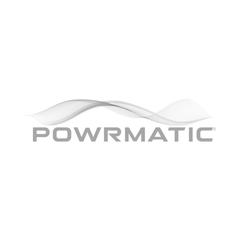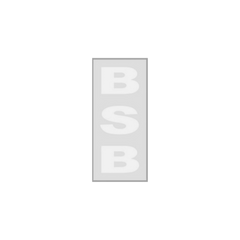Shop All
Elta EC Twin Centrifugal Box Fan
From £1,296.53 excl. VATUnit price excl. VAT /Unavailable- From £547.73 excl. VATUnit price excl. VAT /Unavailable
- From £1,101.53 excl. VATUnit price excl. VAT /Unavailable
Brands
Find out more about Positive Input Ventilation Fans
General Information
General Information
Positive Input Ventilation (PIV) fans provide an effective way to improve indoor air quality in residential buildings. Typically installed in lofts, PIV units supply filtered and tempered air to create a gentle positive pressure, which helps displace stale and humid air. This reduces condensation, mould growth, and pollutant levels, leading to healthier living conditions.
PIV fans are widely used in retrofit housing projects as well as new builds, supporting compliance with Approved Document F and contributing to energy efficiency under Approved Document L. They are often specified to help landlords and housing providers address condensation issues and improve occupant health and comfort.
Modern PIV units in line with Ecodesign requirements use efficient EC motors, offer summer bypass and multiple speed settings, and may include optional heater batteries or integrated humidity/CO₂ sensors. These features allow the units to adapt to seasonal changes and occupancy levels.
Commissioning of PIV systems involves confirming correct installation, testing electrical safety, verifying airflow levels, and ensuring draught-free distribution. Maintenance typically involves replacing filters, inspecting optional heater elements, and following the O&M manual to meet inspection requirements.
When correctly specified and maintained, PIV fans offer long-term benefits to homeowners, landlords, and social housing providers, including low running costs, improved indoor air quality, and support for Building Regulations compliance.
Purpose of PIV Fans:
Positive Input Ventilation (PIV) fans are designed to improve indoor air quality in residential properties by introducing a continuous supply of filtered air, typically from a loft space. This creates a gentle positive pressure inside the dwelling, which helps drive out stale, humid, or polluted air through natural leakage paths and background ventilators. The core purpose of PIV is to reduce excess moisture and pollutants that can otherwise lead to condensation, damp, mould growth, and poor air quality. By maintaining steady air movement, PIV units support compliance with Approved Document F (Ventilation) of the Building Regulations and can form part of a wider ventilation strategy in both new-build and retrofit housing.
Benefits of PIV Fans:
The benefits of PIV systems are wide-ranging for both occupants and property owners. For residents, the most immediate advantages include healthier indoor environments, reduced risk of respiratory issues linked to damp and mould, and improved comfort through fresher air and reduced humidity. For landlords, housing associations, and homeowners, PIV offers a cost-effective, low-maintenance solution to persistent condensation and mould problems that can damage building fabric and finishes. Modern PIV units are energy-efficient, often incorporating EC motors, automatic controls, and features such as summer bypass and optional heaters, ensuring low running costs while adapting to seasonal conditions. Overall, PIV fans deliver long-term value by safeguarding both occupant health and property condition while supporting energy and ventilation compliance obligations.
Frequently Asked Questions
What should engineers verify about safe isolation when specifying PIV fans?
What should engineers verify about safe isolation when specifying PIV fans?
Engineers should confirm that a dedicated local isolator is installed in accordance with BS 7671 (IET Wiring Regulations), positioned close to the PIV unit, accessible, clearly labelled, and capable of being locked off during maintenance. Isolation points should be shown on drawings to avoid conflicts and ensure safe servicing. In domestic installations, compliance with Building Regulations Part P (Electrical Safety in Dwellings) is also required.
During installation, how should contractors handle O&M documentation for PIV fans?
During installation, how should contractors handle O&M documentation for PIV fans?
Contractors should collect manufacturer manuals, wiring schematics, commissioning results, and photographs as work progresses. The O&M manual should include as-installed details such as airflow settings, filter replacement intervals, and test certificates.
Which standards or guidance apply to commissioning of PIV fans?
Which standards or guidance apply to commissioning of PIV fans?
Commissioning should follow the manufacturer’s instructions and demonstrate compliance with Approved Document F (Ventilation) of the Building Regulations. For domestic use, this means verifying airflow, ensuring draught-free distribution, and checking safe electrical operation.
Can PIV fans be used for smoke extract?
Can PIV fans be used for smoke extract?
No. PIV fans are not designed or tested for smoke control and must never be specified for smoke extract applications. Only fans tested and certified to BS EN 12101-3 as part of a smoke control system are suitable.
How is performance verified at commissioning?
How is performance verified at commissioning?
Commissioning involves confirming that the PIV fan delivers the required airflow for the dwelling size without causing draughts or over-pressurisation. Records should include measured airflow at supply grilles and confirmation of correct fan settings.
What evidence should be recorded for O&M?
What evidence should be recorded for O&M?
Evidence should include commissioning certificates, recorded airflow measurements, filter condition, electrical test results, and photographs of the installation. This provides a benchmark for maintenance.
Can PIV fans be connected to a BMS?
Can PIV fans be connected to a BMS?
Most PIV units operate as stand-alone devices. Where monitoring is required, relays or add-on modules can provide run/fault signals for integration into a BMS. Documentation should show how signals are connected and tested.
What site constraints affect installation?
What site constraints affect installation?
Typical constraints include limited loft or ceiling void space, structural fixing points, duct routing, and safe access for servicing. Poor mounting can result in vibration or noise being transmitted into living spaces.
How can acoustic issues be resolved?
How can acoustic issues be resolved?
If noise is a problem, installers should check fan speed settings, ductwork routing, and ensure seals and fixings are secure. Additional silencers, acoustic insulation, or repositioning the fan or outlet may help reduce noise.
What safety measures relate to filter resistance?
What safety measures relate to filter resistance?
PIV fans must have enough capacity to maintain airflow as filters become dirty. Units should include filter change indicators where possible, and maintenance schedules should specify inspection and replacement intervals to prevent performance loss or motor strain.
















